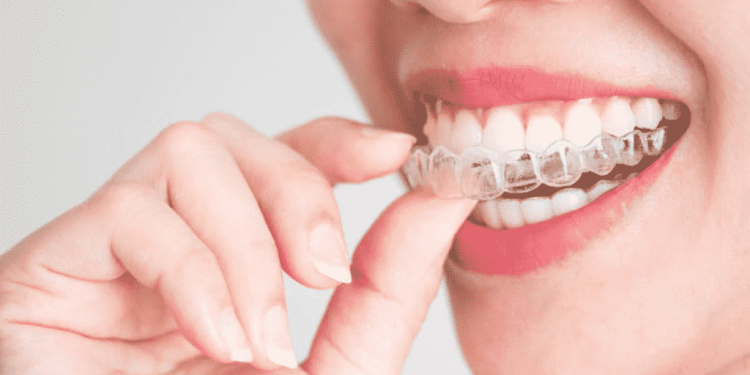How can you tell if your teeth are perfectly aligned? One way to know is to look at the midline of your teeth—this is the line that runs between each tooth. With perfect alignment, there should be equal space on either side of this midline and no overlap of the front or back teeth. But if you have crooked teeth, this midline might not line up perfectly. Here’s how to achieve perfect teeth alignment—and keep them that way!
What is orthodontics?
Orthodontics is a branch of dentistry that deals with misaligned teeth and bite problems. If you’re looking for a way to fix misaligned teeth or achieve perfect teeth alignment, orthodontic treatment can offer many different options. Orthodontic treatment works by applying pressure and force onto specific teeth in order to realign them and improve your bite function. Treatment can take months or even years depending on your individual needs, but there are plenty of steps you can take now that will help you better prepare for future orthodontic treatments, including
Why choose orthodontic treatment?
Many people see braces as a sign of poor oral hygiene, but that’s not necessarily true. In fact, orthodontic treatment is one of many options for achieving perfect teeth alignment. One obvious advantage to braces is aesthetics; studies have shown that most people find aligners and other orthodontic treatments attractive. There are also several health benefits to wearing aligners; research has shown a connection between misaligned teeth and heart disease, and proper alignment has even been linked with improved immune function! With so many advantages, it’s easy to see why so many people choose orthodontic treatment in order to achieve perfect teeth alignment.
Introduction to Invisalign®
Invisalign® is a series of clear aligners made by 3M and your orthodontist can make a custom-made set specifically for you. These plastic trays will gently, gradually and seamlessly straighten your teeth.You can get started today and have perfectly aligned teeth in as little as six months!
What Invisalign can do for you
Invisalign is a popular alternative to traditional braces, designed to move teeth into their proper position. Instead of adhering brackets and wires directly onto your teeth, Invisalign uses what are called aligners. Essentially, these are customized plastic trays that slide over your teeth and slowly shift them into their proper places over time. The idea behind Invisalign is that it’s less noticeable than traditional braces and can be easily removed at night or while eating so you don’t have any restrictions on your diet. While you’re wearing your aligners, you’ll need to wear a retainer at night so that everything stays in place until your teeth move into place permanently—that way when you remove them altogether, everything is where it should be.
What exactly is involved in Invisalign treatment?
The process of Invisalign treatment is based on a simple principle – straight teeth don’t require braces. The revolutionary technology behind Invisalign involves invisible plastic aligners that are custom made for your teeth and your smile. Each Invisalign aligner has its own unique fit, but every one of them will work together to help you achieve better oral health and improved self-confidence. The average duration of an Invisalign course is 22 weeks. At each appointment, your dentist will take impressions and place two new set of aligners in your mouth. Your dentist will adjust these over a series of 4-6 weeks until they are no longer required, or until you reach a desirable result.
Will my teeth stay straight when I stop wearing aligners?
In most cases, your teeth will stay straight after aligners are removed. However, it may take a few months for all of your teeth to return back to their new position. Depending on how long you wore your aligners. For example, if you wore your aligners as often as recommended and for extended amounts of time during that time frame (24 hours per day), it could take 3-6 months for you teeth to completely settle into place. In some cases, your dentist or orthodontist may prescribe another course of treatment after wearing aligners in order to speed up tooth movement. You’ll also need regular checkups with an orthodontist or dentist so they can ensure that everything is moving as planned.
What are the other treatment options if I can’t wear aligners?
Invisalign® is a series of clear, custom-made aligners that straighten teeth without braces. While it’s not a traditional metal and wire system, Invisalign® still requires significant adjustment throughout your treatment. If you have questions about how Invisalign® works, take a look at our guide below; these answers may be able to help clarify some of your biggest concerns.
Commonly Asked Questions About Treatment
1. How long will it take for my teeth to move? Most patients start seeing results within a few weeks, with full results achieved by four months. 2. Will I still be able to talk and eat while wearing my aligners? Yes! These clear aligners can be removed whenever you need them and replaced just as easily when you’re done. 3. How much does Invisalign® cost? As with all treatments, costs vary between practices and regions of the country. But good news is they’re often far less expensive than traditional dental procedures. Like braces or invisalign payment plans have become increasingly common! 4. What if I don’t have dental insurance coverage?
Frequently Asked Questions Regarding Invisalign® Treatment For Children
Invisalign® and traditional braces can be used to correct teeth alignment issues in children and adolescents, but there are a few important factors to consider. Please see below for answers to some common questions. To learn more about how Invisalign® is used in children or adolescents with adult teeth. Schedule an appointment with your orthodontist today. The process will start with an examination of your mouth by a licensed orthodontist. Who will then work closely with you and your dentist throughout treatment. If you have any questions, please ask! We’re here to help!














